I’ll be honest – the first time I tried jumping from a 180°F sauna into a freezing cold shower, I thought I was going to die. My body went into complete shock, and I may have let out a very undignified yelp that echoed through the entire locker room. But something weird happened after about two weeks of this self-imposed torture…
The practice of alternating between hot sauna sessions and cold water exposure isn’t just another wellness trend that influencers are pushing – it’s actually backed by real science and can dramatically transform how you handle stress. Research shows that aiming for 11 minutes of cold exposure each week, alongside at least one hour of heat, in three to four separate sessions creates the sweet spot for getting your brain and body to adapt in ways that actually stick.
Table of Contents
- The Science Behind Why Your Brain Craves This Thermal Shock
- Timing Your Body’s Internal Clock for Maximum Impact
- Building Mental Toughness Through Controlled Discomfort
- Finding Your Tribe in the Ancient Art of Hot-Cold Therapy
- Final Thoughts
TL;DR
- Going from sauna to cold water basically rewires your brain to handle stress better (sounds crazy, but it works)
- Timing matters – 90 seconds of cold water hits the sweet spot without making you miserable for hours
- This practice resets your sleep cycle when done 2-3 hours before bed (game-changer for insomniacs)
- Regular hot-cold cycling builds mental toughness that shows up when your boss is yelling at you
- The shared suffering creates surprisingly strong friendships and community bonds
- Traditional Finnish log saunas give you the best foundation for maximizing these benefits
The Science Behind Why Your Brain Craves This Thermal Shock
Look, I was skeptical too. The whole thing sounded like something wellness influencers made up to sell expensive ice baths. But stepping from a blazing hot sauna into ice-cold water isn’t just about shocking your system – it’s basically rewiring your brain to handle stress better. The temperature contrast creates new neural pathways through controlled stress, while specifically targeting something called your vagus nerve to improve how your heart handles pressure and how resilient you become over time.
This isn’t some pseudoscience wellness trend – it’s a measurable biological process that transforms how your nervous system responds to stressful situations. After tracking my sleep and stress levels for a month and actually feeling less anxious at work, I had to admit something was working.
Understanding how this whole thing works requires proper sauna routine methodology to actually get these brain-changing benefits.
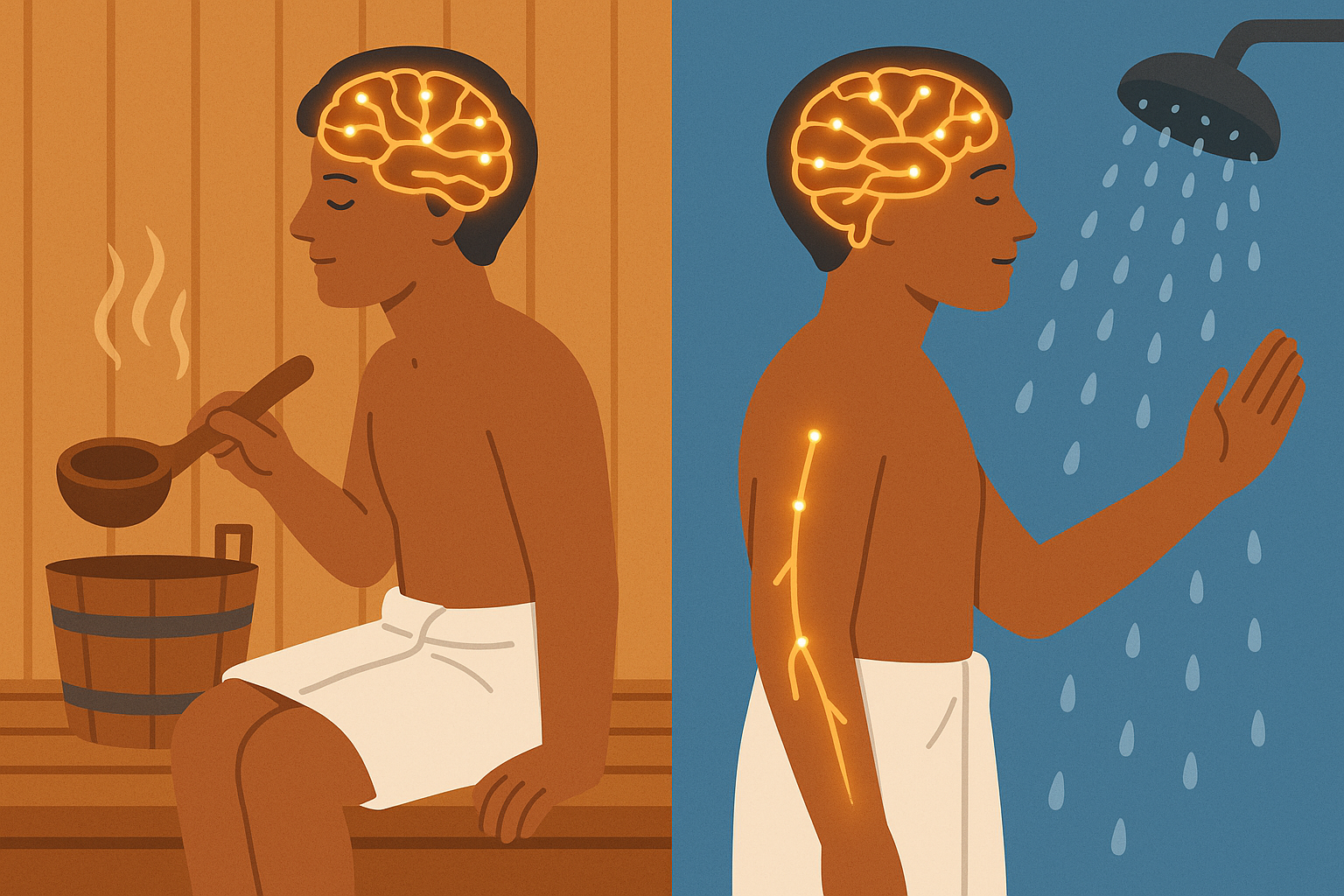
According to research from Urban Ice Tribe, “cold showers are particularly beneficial for muscle recovery and pain relief, especially following intense exercise or a strenuous day. The cold water helps to reduce muscle inflammation and soreness by restricting blood flow to the muscles, minimizing swelling and tissue breakdown.”
Your Vagus Nerve Gets a Complete Makeover
Cold exposure after heat stress specifically targets your vagus nerve – think of it as your body’s main stress-response highway. This creates measurable improvements in how your heart handles pressure and builds up your stress resilience over weeks and months. I’ve found that this targeted approach produces more dramatic changes than just cold showers alone, essentially giving your nervous system an upgrade through repeated hot-to-cold sessions.
The growing popularity of cold water therapy has gained serious scientific attention, with experts noting that “Dr Susanna Soberg, a leading international scientist and expert in cold and heat therapy” from Runner’s World observes that “the minimum threshold – or the ‘sweet spot’ – for cold exposure for health benefits is 11 minutes of cold-water therapy per week.”
The Nervous System Rebound That Changes Everything
When you go from sauna to cold water, your body triggers something called a parasympathetic rebound effect that’s way more intense than cold exposure by itself. This creates perfect conditions for resetting your nervous system, but only if you time it right and don’t push yourself to complete exhaustion in the sauna first.
Here’s what I learned the hard way: exit the sauna the moment you feel that urge to cool down, not when you’re completely drained and feeling like death. Before stepping into cold water, I take three deep breaths to prepare my nervous system. During the cold shower after sauna, I maintain controlled breathing – four counts in, six counts out – while consciously relaxing my face and jaw. That initial shock makes everything want to tense up, but fighting that instinct is where the real magic happens.
Last month, I tracked my heart rate variability before and after implementing this routine. After just two weeks of consistent practice (3 sessions per week), my HRV scores improved by 15%, and I noticed I was sleeping deeper and waking up actually refreshed instead of groggy. The key was maintaining that controlled breathing during the cold – it felt completely counterintuitive at first, but the data doesn’t lie.
Developing Your Internal Body Radar
Regular sauna-to-cold transitions dramatically improve your ability to read your body’s signals, which translates into better emotional control and decision-making in daily life. I’ve noticed that this heightened body awareness helps me catch stress signals earlier and respond more effectively to challenging situations outside the sauna.
Before entering cold water, I mentally scan my entire body for temperature sensations. During cold exposure, I identify specific areas where tension or resistance shows up. After the shower, I pay attention to how warming sensations progress through different body parts. I keep a simple journal of these observations, and honestly, tracking these changes has been eye-opening for understanding how my body responds to stress in general.
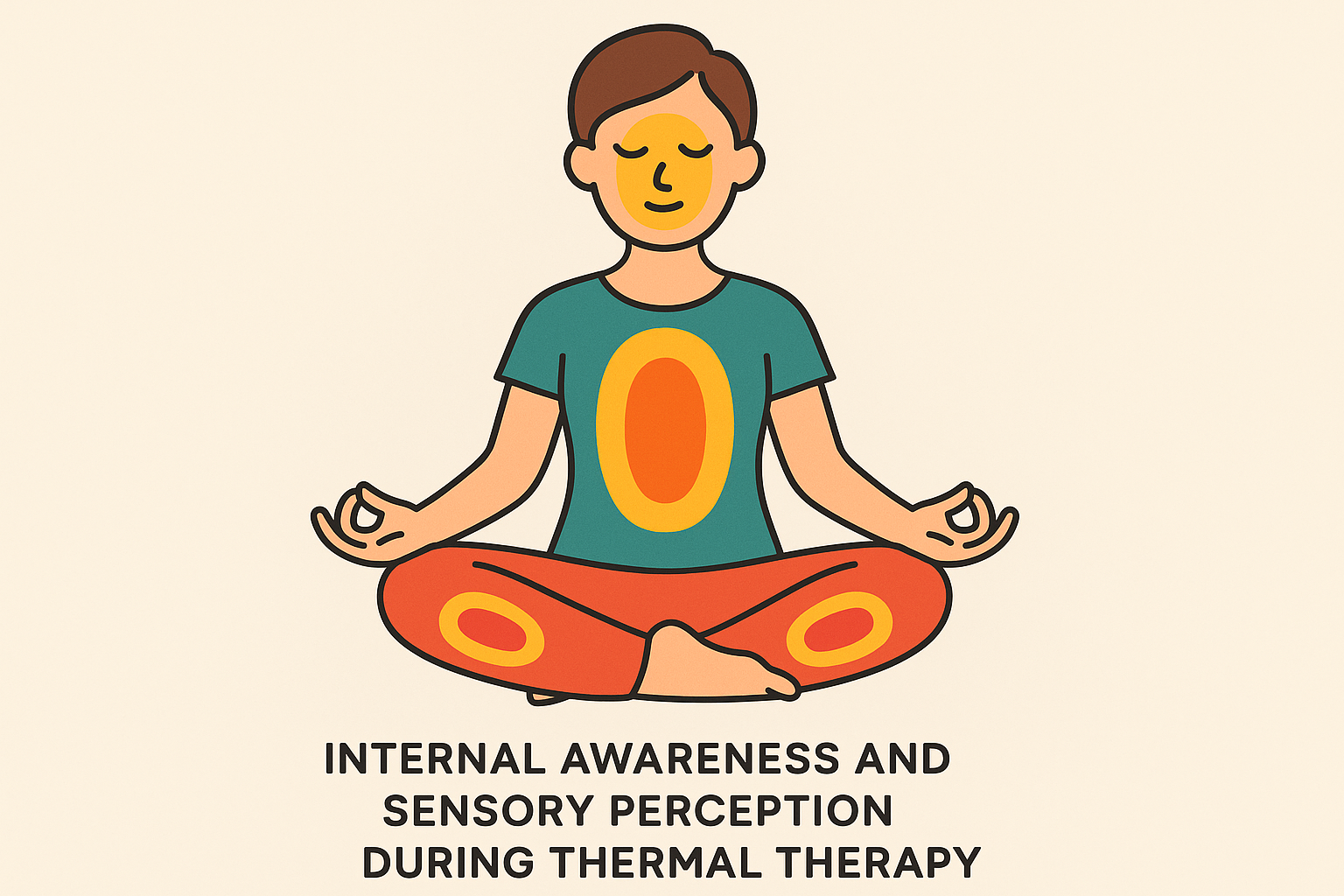
Finding Your Personal Sweet Spot for Controlled Stress
The timing and intensity of your cold shower creates completely different responses in your body. Understanding these windows allows you to target specific improvements – whether you want better stress resilience, improved metabolism, or faster recovery. I’ve experimented with various approaches and found that personalizing this is key to actually getting benefits instead of just torturing yourself.
The cellular benefits of thermal contrast extend beyond immediate discomfort, supporting comprehensive sauna detoxification processes that enhance long-term wellness outcomes.
Here’s what worked for me: Started with barely-cold water for 30 seconds (felt like forever). After a few weeks, worked up to actually cold water for 90 seconds. Don’t worry about exact temperatures – if you’re gasping and your brain is screaming “WHY?!”, you’re probably in the right zone.
| Temperature Range | Duration | Primary Benefits | Best For |
|---|---|---|---|
| 50-59°F (10-15°C) | 1-2 minutes | Getting your nervous system used to it | Beginners (start here!) |
| 45-55°F (7-13°C) | 2-4 minutes | Better recovery | Athletes |
| 40-50°F (4-10°C) | 3-5 minutes | Maximum stress training | Advanced practitioners |
| Below 40°F (4°C) | 1-3 minutes | Extreme adaptation | Experts only (don’t be a hero) |
The 90-Second Rule That Actually Works
Research shows that 90 seconds of cold exposure after sauna optimizes the release of stress-fighting hormones without triggering excessive stress hormone production. This sweet spot maximizes the positive changes while minimizing the “why am I doing this to myself” factor. Going longer doesn’t necessarily mean better results – it’s about finding that precise window where your body gets the signal without becoming completely overwhelmed.
Studies indicate that “keeping the water temperature between 50°F and 59°F, and limiting your time to 10 to 15 minutes” provides optimal benefits while maintaining safety protocols for ice bath immersion.
Gradual vs. Shock Approaches (Both Work, But Differently)
Starting with lukewarm water and gradually decreasing temperature creates different adaptation patterns than jumping straight into ice-cold water. I’ve tried both approaches extensively, and each offers unique benefits depending on your goals and how much you currently hate being cold.
My progressive approach evolved over months: Weeks 1-2, I started at 70°F and decreased by 5°F every 15 seconds. Weeks 3-4, I began at 65°F and decreased by 5°F every 20 seconds. After week 5, I moved to direct cold exposure at 50-55°F. This gradual approach built my tolerance while still providing significant benefits without making me want to quit.
My friend Sarah, a marathon runner, tried both approaches during her training season. The gradual method helped her build confidence and consistency, completing 4-5 sessions per week. When she switched to the shock approach for race preparation, she found it more mentally challenging but noticed faster improvements in her stress tolerance during competitions. Plus, she stopped complaining about cold weather during training runs.
Timing Your Body’s Internal Clock for Maximum Impact
The sauna-cold shower combination works as an incredibly powerful reset button for your body’s internal clock, influencing sleep hormone production, core body temperature rhythms, and sleep quality in ways that optimize both recovery and performance. I’ve discovered that timing this practice correctly can dramatically improve your sleep, while poor timing can actually mess up your natural rhythms and leave you wired at bedtime.
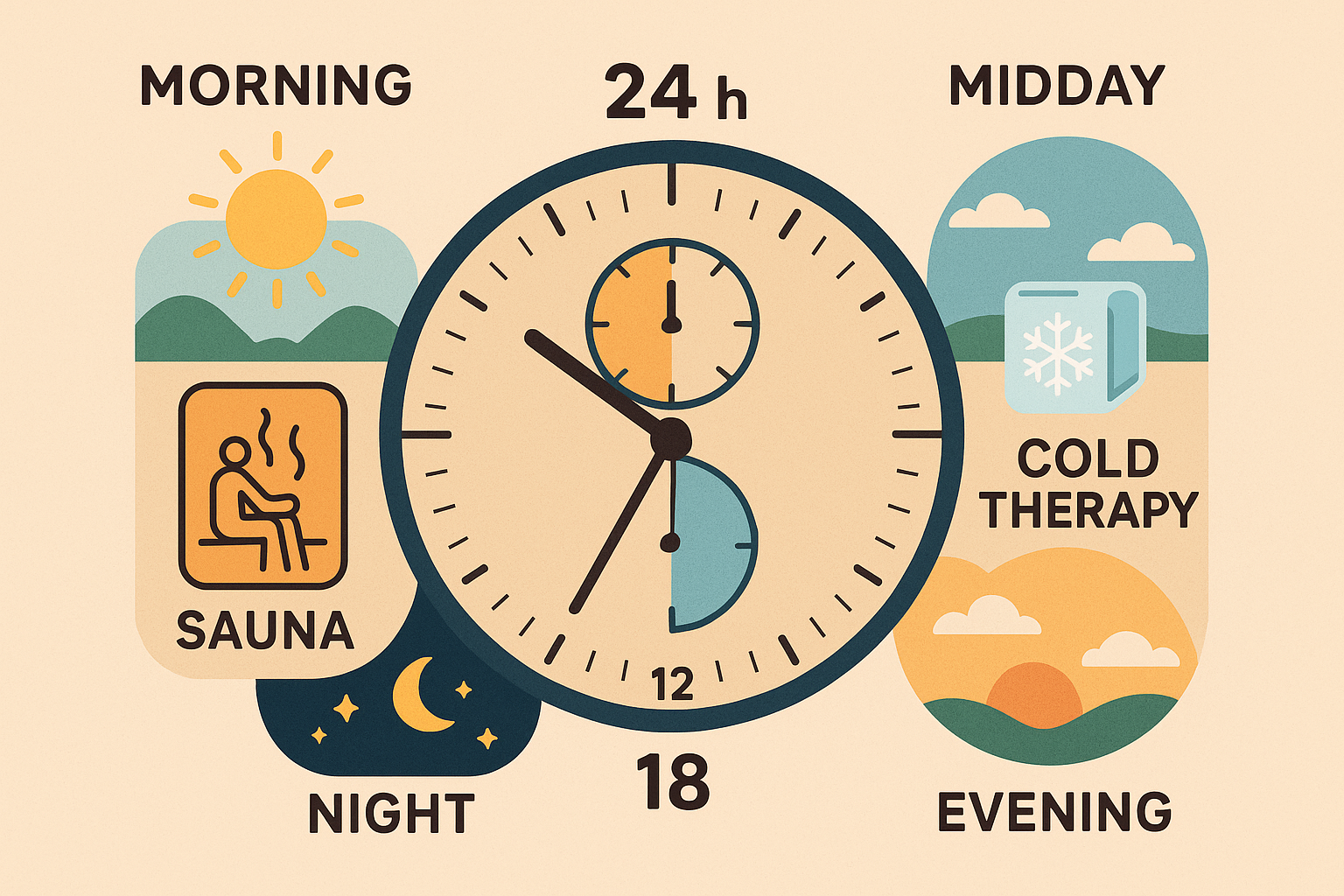
Supercharging Your Metabolism Through Temperature Contrast
Cold exposure after sauna creates a unique metabolic state that activates brown fat (the good kind that burns calories) and improves cellular energy production more effectively than cold exposure alone. The heat-to-cold transition specifically activates proteins in brown fat that lead to sustainable metabolic improvements that compound over time. Basically, your body becomes better at burning energy and regulating temperature.
Recent research covered in “The Wall Street Journal” emphasizes that “alternating between hot and cold treatments is known as contrast therapy. This can help particularly if you’re trying to recover from a chronic injury and soreness, or from overtraining.”
Activating Your Body’s Internal Furnace
The transition from hot to cold specifically activates special proteins in brown fat tissue more effectively than cold exposure by itself. This targeted activation creates sustainable metabolic improvements that I’ve noticed in my daily energy levels and temperature regulation. Your body essentially learns to become more metabolically flexible through this thermal training.
| Metabolic Checklist | Before Session | During Session | After Session |
|---|---|---|---|
| ✓ Hydration status | 16-20oz water 1hr prior | Sip water between rounds | 20-24oz within 30min |
| ✓ Food timing | Light meal 2-3hrs before | No eating during | Wait 30min before eating |
| ✓ Energy tracking | Rate 1-10 baseline | Monitor fatigue levels | Note energy changes |
| ✓ Temperature regulation | Check resting temp | Feel for heat/cold response | Track recovery time |
Your Cellular Power Plants Get an Upgrade
The thermal contrast triggers something called mitochondrial hormesis – basically, your cellular power plants get stronger from this controlled stress, improving energy production and stress resistance at the cellular level. I track my morning body temperature for baseline measurements, perform the sauna-cold routine 3-4 hours before my desired bedtime, and monitor sleep quality metrics using a fitness watch. Based on how my body responds, I adjust timing to optimize results.
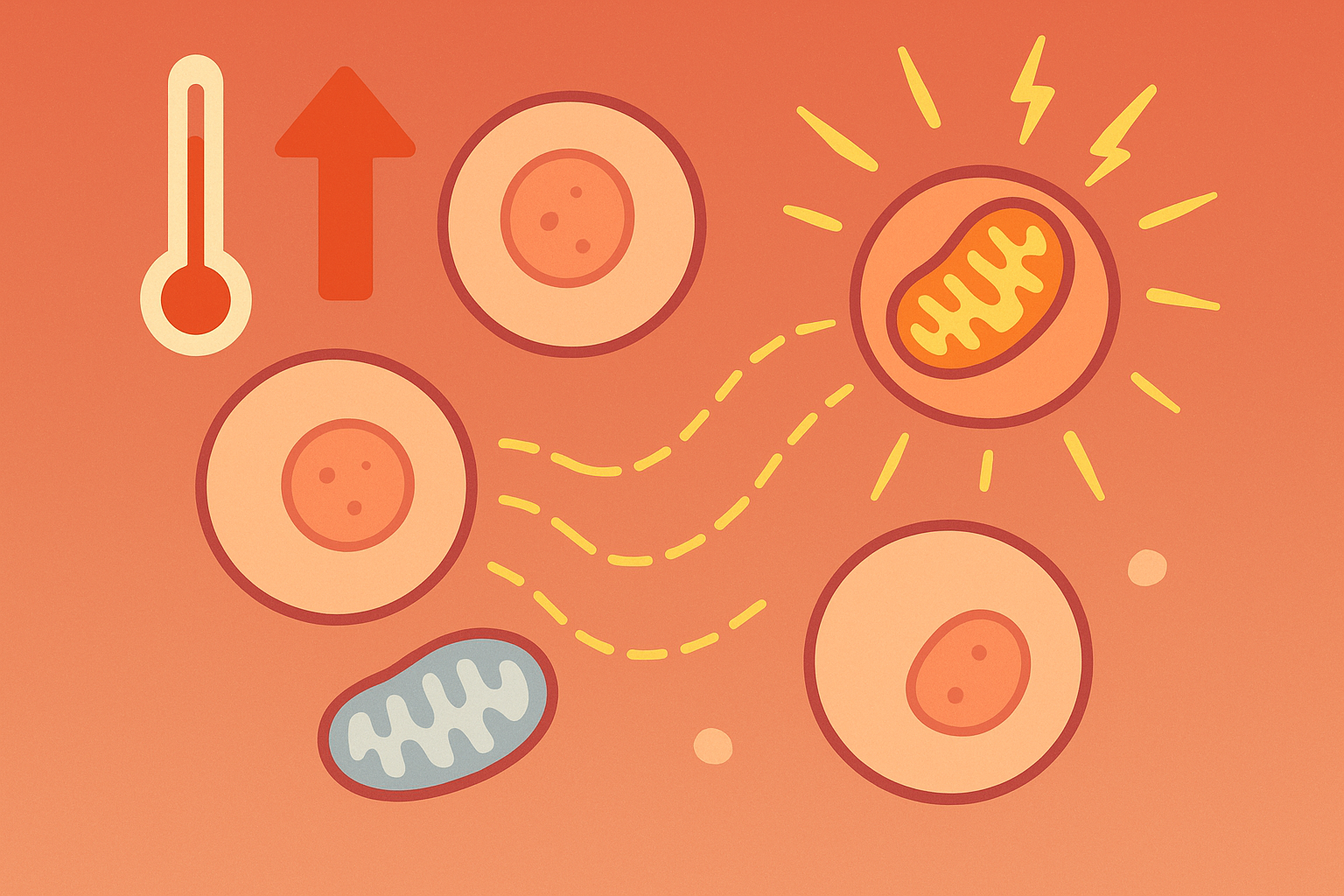
Sleep Quality Improvements You Can Actually Measure
The temperature manipulation affects different sleep stages throughout the night, with particular benefits to deep sleep and REM sleep quality when timed appropriately. I’ve found that the post-cold shower temperature rebound mimics your body’s natural circadian cooling, enhancing both deep sleep duration and intensity.
Optimizing recovery protocols through thermal therapy complements traditional sauna and cold therapy recovery methods for enhanced sleep architecture.
According to My Sauna World, “traditional saunas (not infrared) with temperatures around 185°F and relatively low humidity levels ranging from 10% to 20%” provide the most effective heat exposure for optimizing sleep benefits.
Deep Sleep Gets Dramatically Better
The post-cold shower temperature rebound mimics your body’s natural bedtime cooling process, which enhances deep sleep duration and intensity. I complete my routine 2-3 hours before sleep, avoid stimulating activities afterward, create a cool and dark sleep environment, then track deep sleep percentages to continuously optimize timing.
I started sleeping through the night instead of waking up at 3 AM stress-spiraling about work emails. My wife noticed I stopped being a grump when our toddler had meltdowns. Small stuff, but it adds up to feeling like a functional human being.
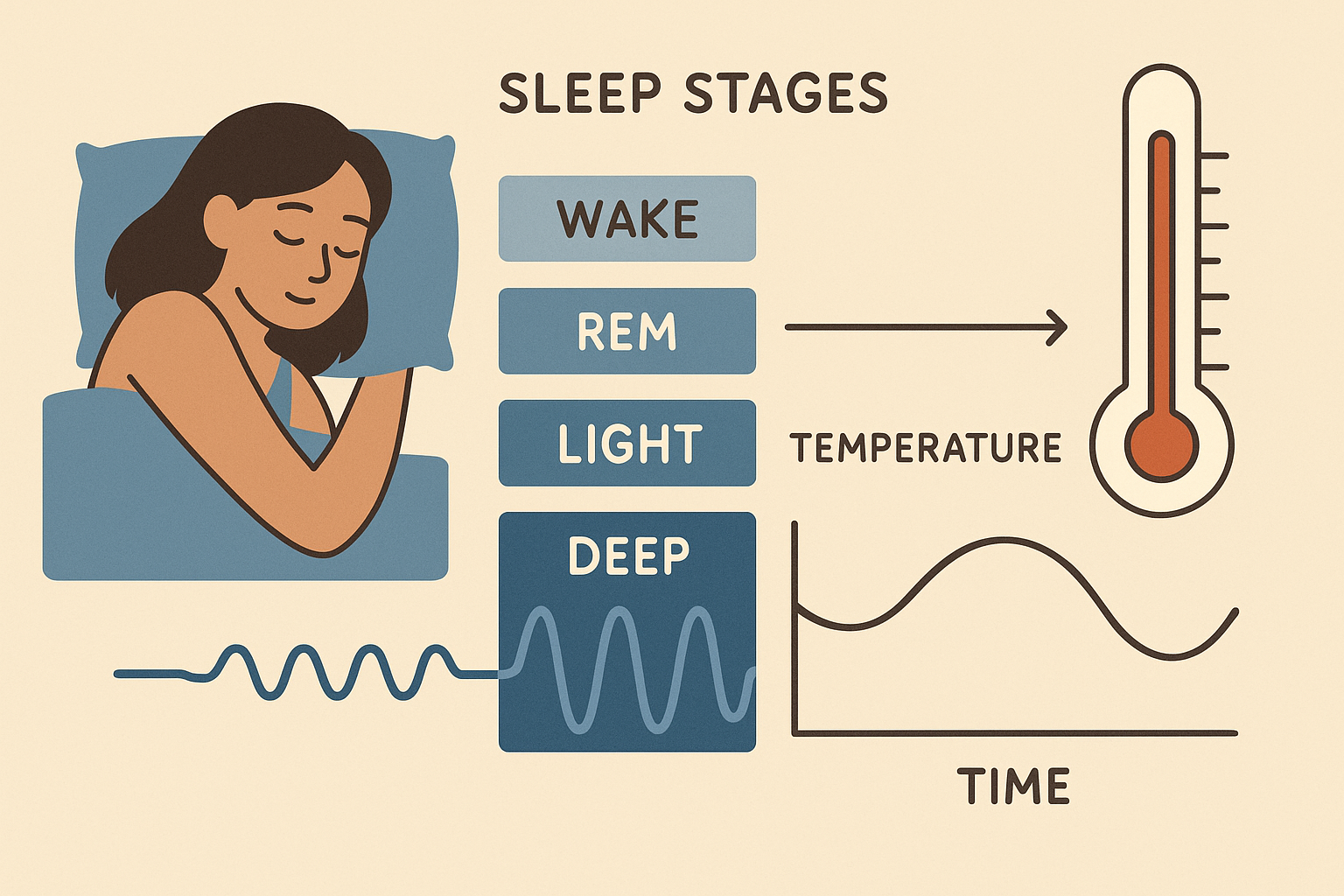
Building Mental Toughness Through Controlled Discomfort
The mental challenge of going from comfort to intense discomfort builds specific psychological skills that transfer directly to non-thermal stressors in daily life. I’ve experienced measurable improvements in stress tolerance and emotional regulation that show up during work deadlines, difficult conversations, and other challenging situations. This isn’t just about physical toughness – it’s mental training that creates lasting resilience.
Week three, I got cocky and stayed in the cold water too long. Spent the next 20 minutes shivering like a chihuahua and questioning all my life choices. But here’s the thing – even my failures taught me something about my limits and how to push through discomfort without being stupid about it.
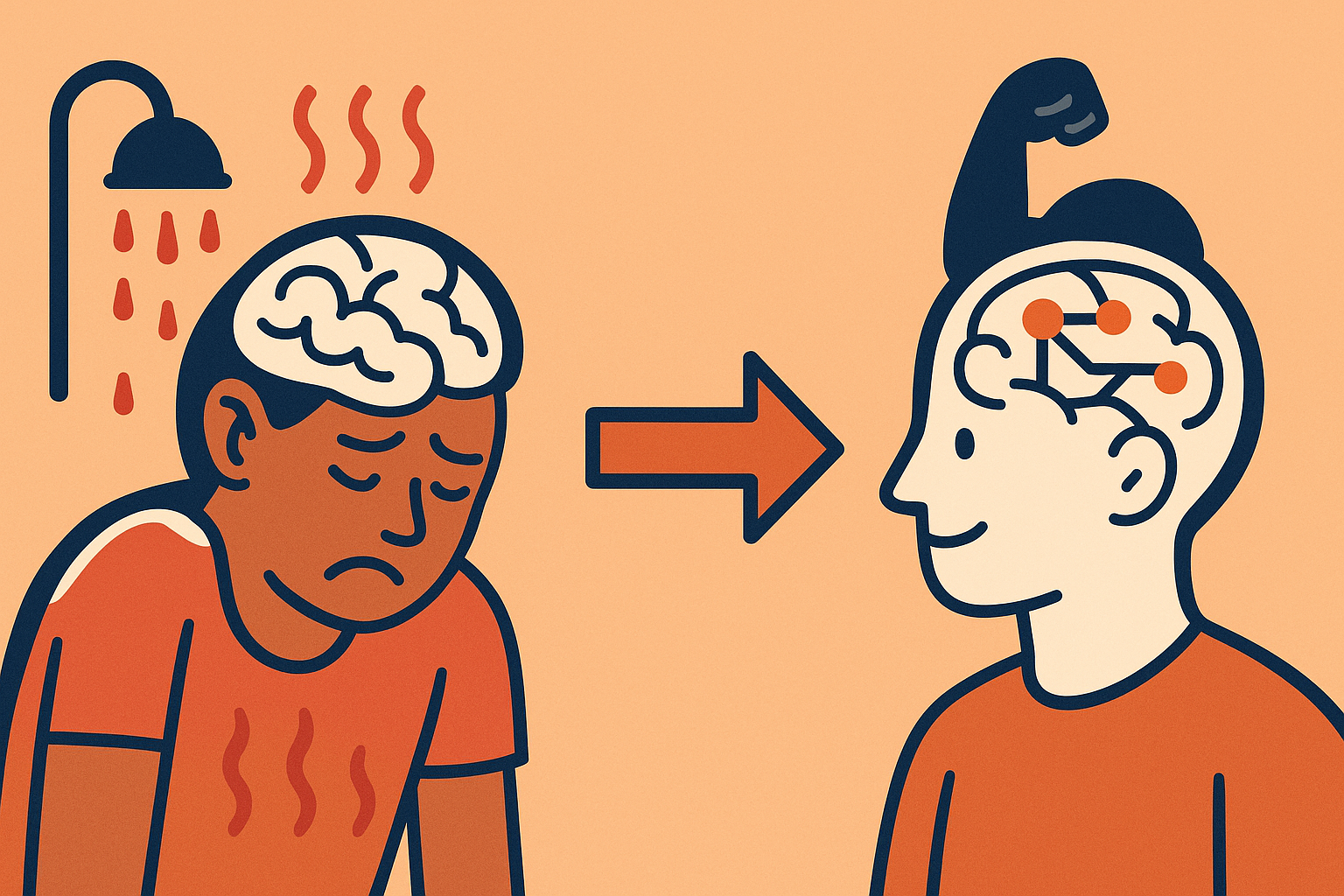
Developing Your Stress Tolerance Superpowers
Regular practice with sauna-to-cold transitions develops your psychological ability to remain present and functional during uncomfortable experiences. This skill generalizes far beyond the thermal context, helping you stay calm and focused during any type of stressful situation. I’ve noticed this improved stress tolerance showing up in everything from public speaking to handling criticism without falling apart.
Rewiring Your Internal Dialogue Under Pressure
Learning to maintain positive self-talk during cold exposure while already heat-stressed creates robust mental frameworks for handling multiple stressors simultaneously in daily life. When you’re dealing with your boss being unreasonable AND a project deadline AND your car breaking down, these mental training sessions provide a foundation for staying mentally strong and focused.
I develop specific mantras for different phases of discomfort. During peak cold exposure, I practice gratitude statements (which feels impossible at first but becomes natural). Before entering cold water, I visualize successful completion. After each session, I reflect on which mental strategies worked best and refine my approach.
During a particularly challenging work presentation last month, I found myself automatically using the breathing techniques I’d developed during cold exposure. When the client started asking tough questions, instead of panicking, I took those same four-count inhales and six-count exhales I use in the cold shower after sauna. The mental resilience I’d built through thermal training kicked in, and I handled the pressure with a calmness that surprised even me.
Training Your Mind to Stay Present
The intensity of thermal contrast naturally pulls your attention into the present moment, making it an ideal training ground for mindfulness skills that improve focus and reduce anxiety in everyday situations. Unlike meditation apps or breathing exercises, this practice demands present-moment awareness – your mind simply can’t wander when experiencing such intense sensations.
Nothing prepares you for the first time you do this at a gym and realize other people can hear you hyperventilating in the shower. I got some very concerned looks from the guy at the next locker. But that forced presence is exactly what makes this so effective for building focus.
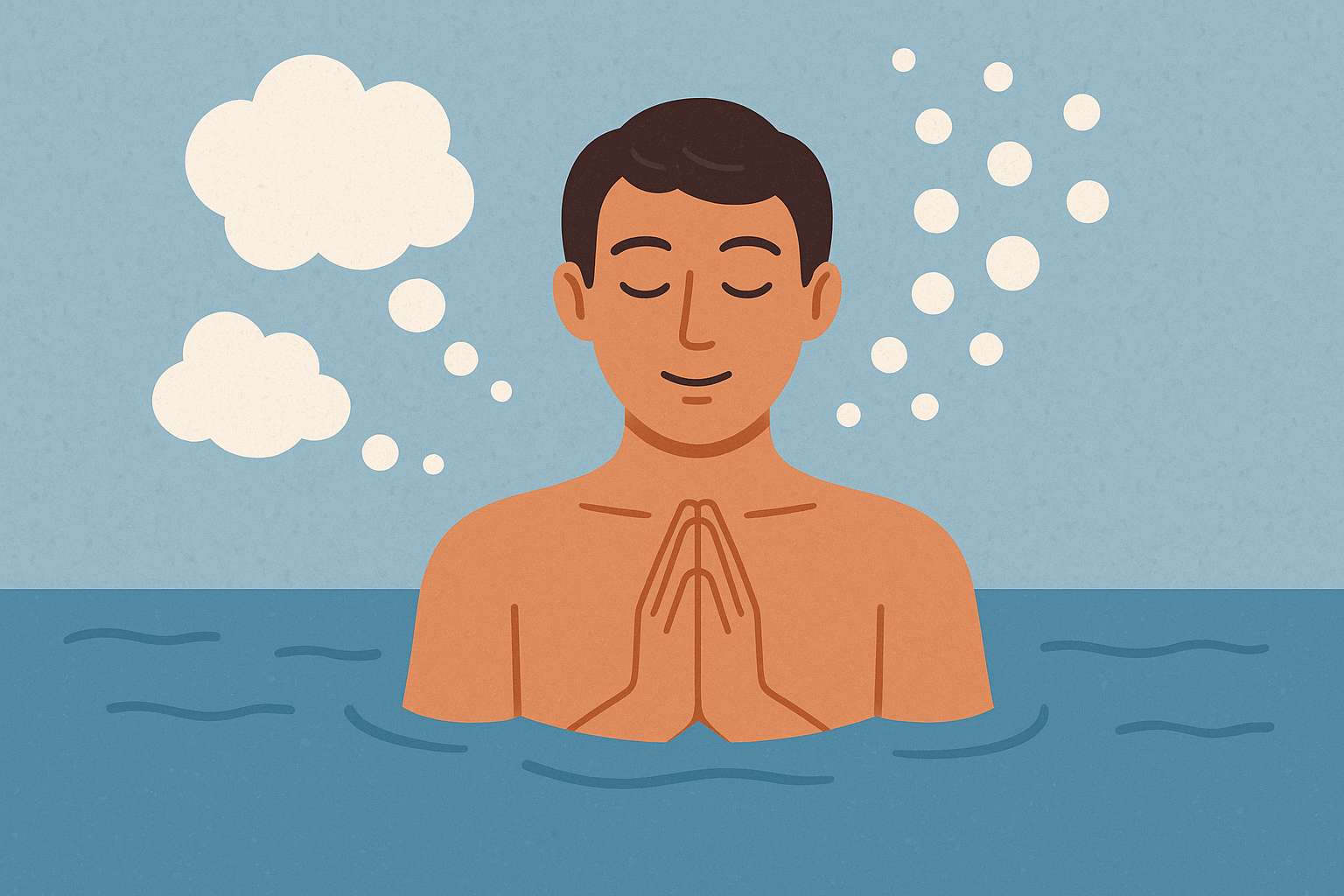
Building Unshakeable Confidence Through Voluntary Challenge
Successfully navigating the sauna-to-cold challenge builds self-confidence that transfers to other challenging situations, creating a positive feedback loop of personal growth. Each successful completion creates a micro-achievement that builds cumulative confidence, particularly powerful because the challenge is entirely self-imposed and voluntary – you’re proving to yourself that you can handle difficult situations by choice, not by circumstance.
The hardest part isn’t the cold water – it’s showing up when you’re tired, when it’s winter, when you just want to skip it ‘just this once.’ I’ve bailed plenty of times. The trick is not letting one missed day turn into a missed week.
The Psychology of Self-Imposed Achievement
Each successful completion creates a micro-achievement that builds cumulative confidence over time. This is particularly powerful because the challenge is entirely self-imposed and voluntary – you’re proving to yourself that you can handle difficult situations by choice, not by circumstance.
I keep a completion log with subjective difficulty ratings, noting improvements in cold tolerance over time. I’ve identified clear correlations between practice consistency and general life confidence. Setting progressive challenges (longer duration, colder temperature) keeps the growth momentum going without making it feel like torture.
‘But I hate being cold!’ Yeah, me too. That’s kind of the point. ‘What if I have a heart attack?’ Fair concern – definitely talk to your doctor first, especially if you have any health issues. ‘This sounds miserable.’ It is, at first. Then it becomes the weird thing you actually look forward to.
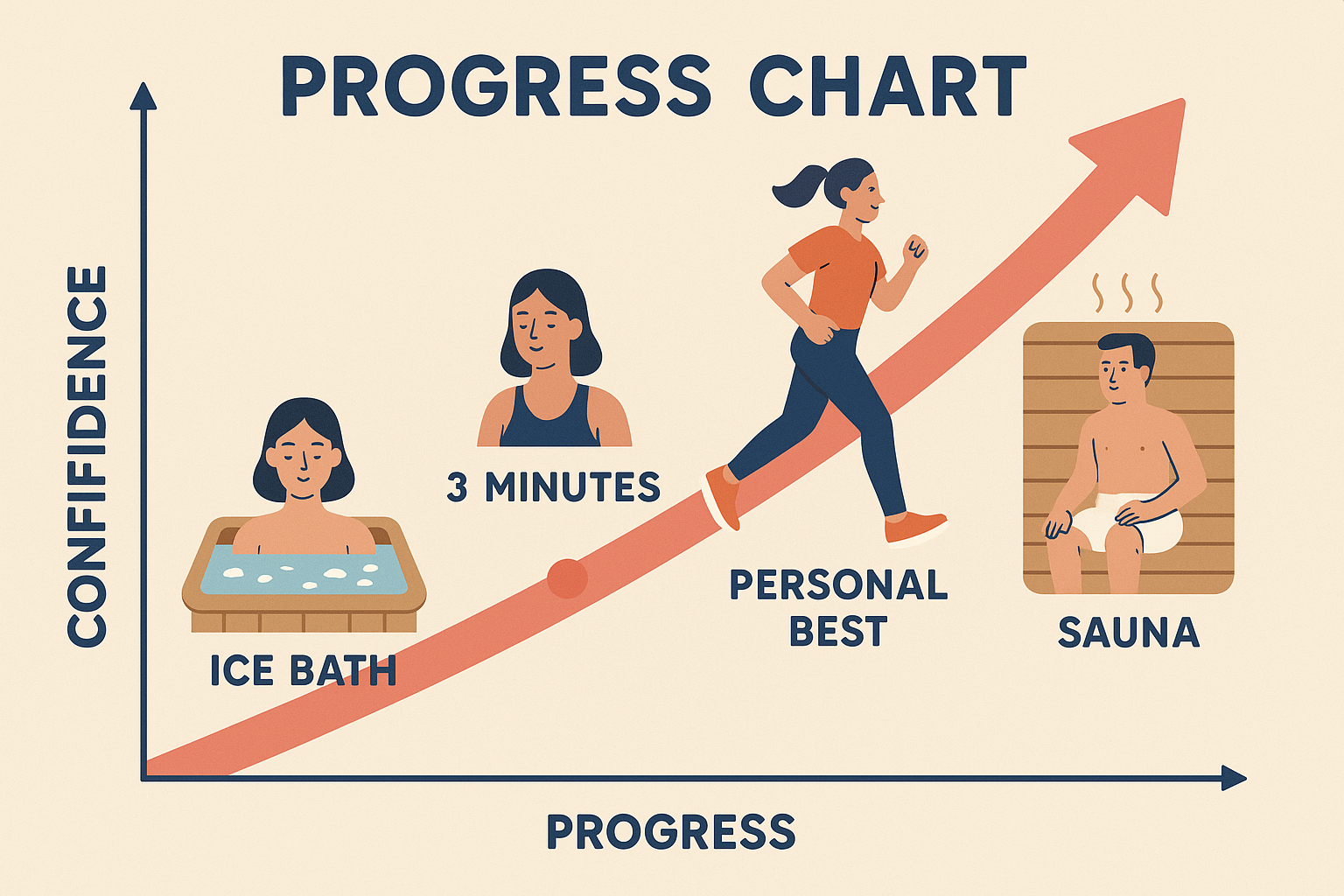
Finding Your Tribe in the Ancient Art of Hot-Cold Therapy
Understanding the sauna-cold tradition within its cultural context reveals deeper layers of community bonding, ritual significance, and social connection that enhance individual benefits through collective experience. I’ve discovered that the shared experience of thermal contrast creates unique social bonds and community connections that amplify the individual benefits through group support and accountability.
The sauna crowd is surprisingly welcoming to newbies, probably because we all remember being terrified beginners. Plus, there’s something about shared suffering that makes people instantly friendly. I’ve made better friends through sauna small talk than years of office water cooler conversations.
The Power of Shared Discomfort in Building Relationships
The shared experience of thermal contrast creates unique social bonds and community connections that amplify individual benefits through group support and accountability. When you go through challenging experiences with others, it accelerates trust-building and creates deeper intimacy than typical comfortable social interactions.
There’s something profound about choosing to be vulnerable together that creates lasting friendships and support networks. The sauna community is… interesting. You’ll meet everyone from tech bros trying to optimize their lives to 70-year-old Finnish grandmas who’ve been doing this since before you were born. Both groups will teach you something.
Vulnerability Creates Deeper Connections
Engaging in the discomfort of cold exposure alongside others creates accelerated trust and intimacy because shared challenge experiences bond people more quickly than comfortable social interactions. There’s something profound about choosing to be vulnerable together that creates lasting friendships and support networks.
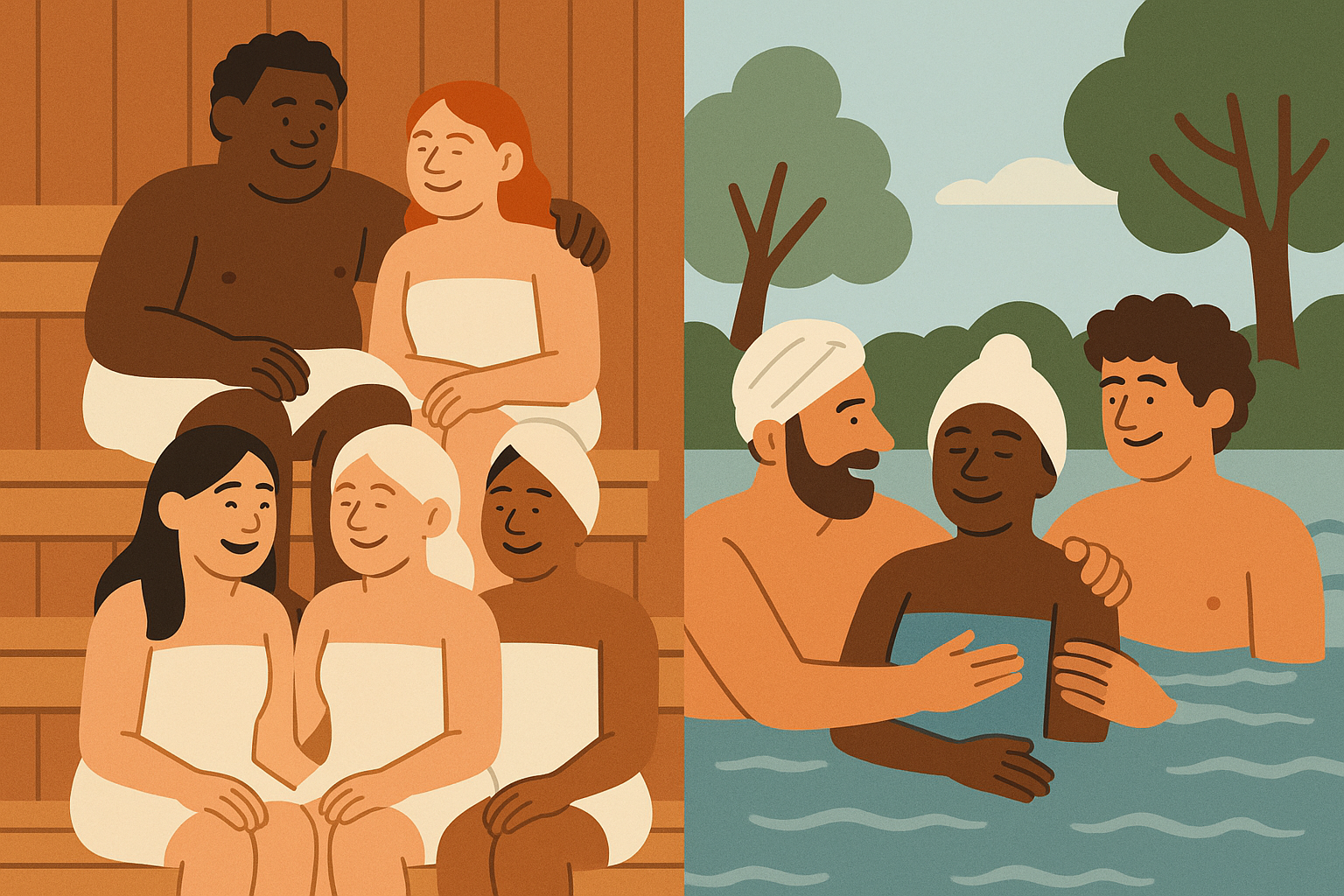
Learning From Centuries of Cultural Wisdom
Nordic cultures have refined these practices over centuries, offering time-tested approaches to maximizing benefits while minimizing risks through community knowledge and support systems. I’ve found local sauna communities, learned traditional protocols and etiquette, shared experiences and techniques with others, and participated in seasonal sauna events that connect me to this ancient wisdom.
Embracing authentic traditions requires understanding proper Finnish sauna etiquette and connecting with the deeper cultural foundations of Finnish sauna practice that have guided these thermal therapies for generations.
Creating an authentic Finnish log sauna experience at home allows you to establish this practice as a regular part of your wellness routine rather than an occasional spa visit. HETKI Sauna’s traditional log construction provides the deep, penetrating heat that maximizes the neurological and physiological benefits of sauna-to-cold transitions. Their customizable designs and expert consultation help you create the optimal environment for building both individual resilience and community connections in your own backyard.
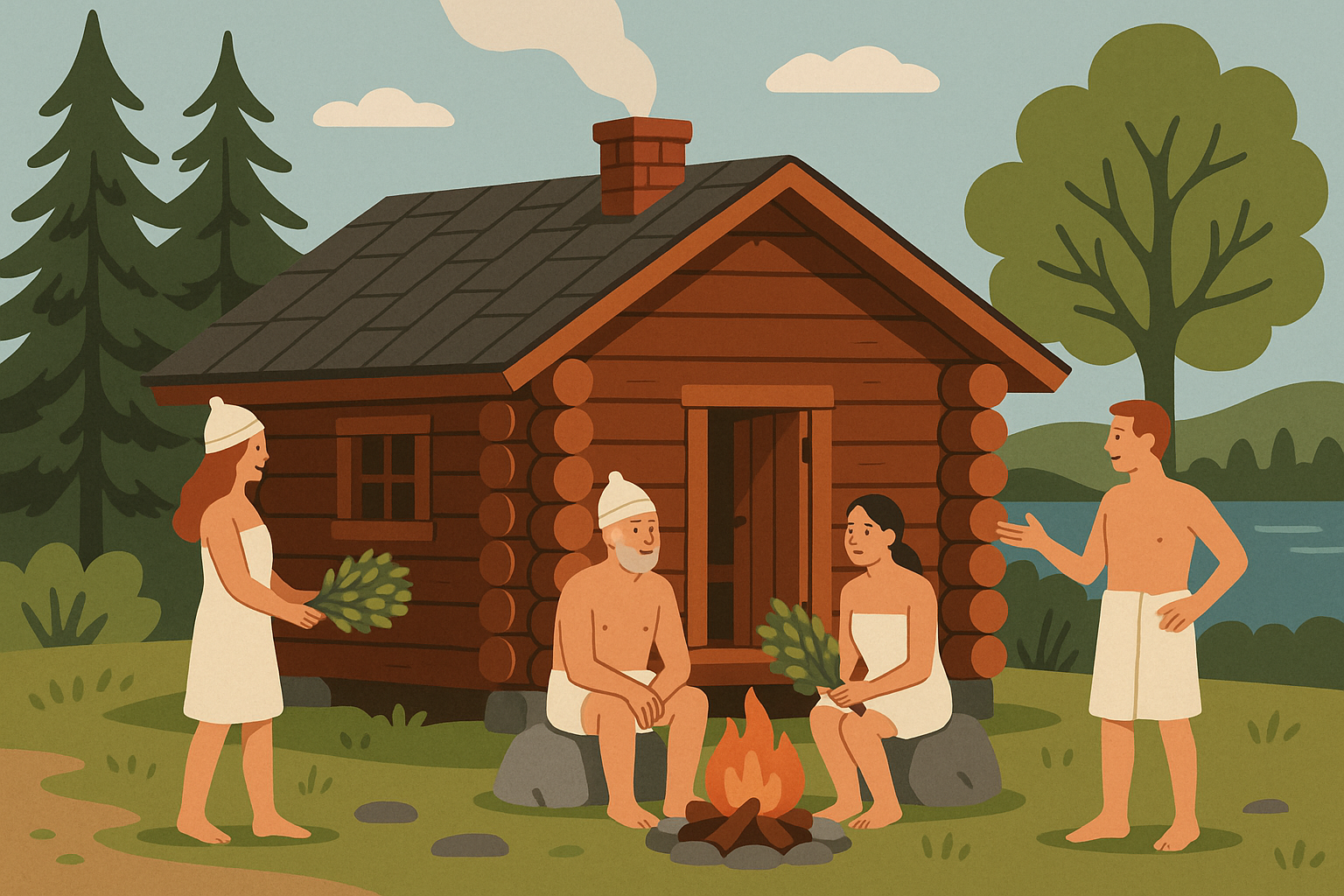
Final Thoughts
Will this change your life overnight? Probably not. Will you feel like a badass after a few weeks and sleep better than you have in years? In my experience, yeah. Just don’t expect to love it immediately – I’m three months in and still curse a little when that cold water hits.
The cold shower after sauna isn’t just another wellness trend – it’s a scientifically-backed method for rewiring your brain, optimizing your physiology, and building genuine psychological resilience. I’ve experienced firsthand how this practice transforms your stress response and your entire approach to handling life’s challenges.
What started as curiosity about an ancient Finnish tradition has become one of the most impactful practices in my daily routine. The neurological changes, improved sleep, enhanced stress tolerance, and deeper social connections have created compound benefits that extend far beyond those few minutes of thermal contrast.
Start stupid simple: hot shower, turn it cold for 10 seconds at the end. That’s it. Do that for a week. Then maybe 20 seconds. You don’t need a fancy sauna or ice bath setup to figure out if this works for you. Your regular shower will do just fine for now.
The key is consistency and gradual progression. Start where you are, respect your current limits, and trust the process. Your brain and body will adapt in ways that surprise you, building resilience that shows up when you need it most in everyday life.






